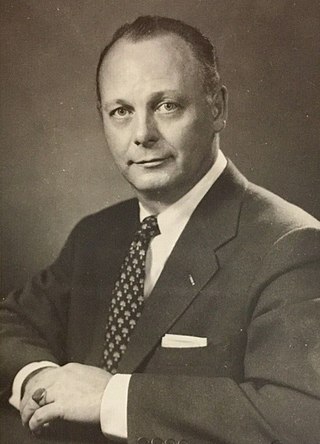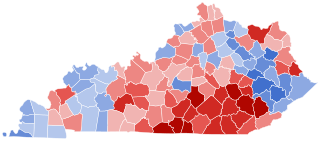Related Research Articles

Frederick Andrew Seaton was an American newspaperman and politician. He represented the U.S. state of Nebraska in the U.S. Senate and served as U.S. Secretary of the Interior during Dwight D. Eisenhower's administration.

Oveta Culp Hobby was an American government official and businesswoman who served as the first United States Secretary of Health, Education, and Welfare from 1953 to 1955. A member of the Republican Party, Hobby was the second woman ever to serve in a presidential cabinet.

The 1952 United States Senate elections was an election for the United States Senate which coincided with the election of Dwight D. Eisenhower to the presidency by a large margin. The 32 Senate seats of Class 1 were contested in regular elections, and three special elections were held to fill vacancies. The Republicans took control of the Senate by managing to make a net gain of two seats. However, Wayne Morse (R-OR) became an independent forcing Republicans to rely on Vice President Richard Nixon's tie-breaking vote, although Republicans maintained a 48–47–1 plurality. Throughout the next Congress, Republicans were able to restore their 49–46–1 majority. This was the third time, as well as second consecutive, in which a sitting Senate leader lost his seat.

The 83rd United States Congress was a meeting of the legislative branch of the federal government of the United States in Washington, D.C. from January 3, 1953, until January 3, 1955, during the last two weeks of the Truman administration, with the remainder spanning the first two years of Dwight Eisenhower's presidency. It was composed of the Senate and the House of Representatives. The apportionment of seats in the House was based on the 1950 U.S. census.

James Paul Mitchell was an American politician and businessman from New Jersey. Nicknamed "the social conscience of the Republican Party," he served as United States Secretary of Labor from 1953 to 1961 during the Eisenhower Administration. Mitchell was a potential running mate for the 1960 Republican presidential candidate, Vice President Richard M. Nixon. However, Nixon chose Henry Cabot Lodge Jr. After an unsuccessful run for Governor of New Jersey in 1961, he retired from politics.
Rowland Roberts Hughes (1896–1957) was a director of the United States' Office of Management and Budget from April 16, 1954, until April 1, 1956. Hughes, known for his distinctive black eye patch, was called "the logical man" in a 1956 Time Magazine cover story.

The following table indicates the party of elected officials in the U.S. state of Kentucky:
Chester R. Davis was an American businessman.
John Wesley Hanes III was a U.S. civil servant.
Charles F. Masterson was the Special Assistant to the President on the White House Staff during the Eisenhower Administration.
Gerald D. Morgan was born in New York, graduated from Princeton University in 1930, and Harvard Law School in 1933. He was a member of the bar in New York, Kentucky, and the District of Columbia. After his graduation he served in the Solicitor's Office of the United States Steel Corporation for a brief term. Morgan became assistant legislative counsel for the House of Representatives. In 1938, he began practicing law in Louisville, Kentucky, but he returned to his former job in the House in 1939. Between 1945 and 1950, Morgan was a partner in the Washington law firm of Morgan and Calhoun. He worked on special assignments for several Congressional committees, including the House Committee On Un-American Activities.

Maxwell Milton Rabb was an American lawyer who served in various positions as an advisor to U.S. President Dwight D. Eisenhower, and later as Ambassador to Italy under President Ronald Reagan.
The U.S. Council on Foreign Economic Policy (CFEP) was a high-level organization created by President Dwight D. Eisenhower in December 1954 to coordinate the development of the foreign economic policy of the United States.
Wayne B. Warrington Sr. was born in Denver, Colorado and attended Glendale Community College (California) before beginning service in the United States Army Air Corps in 1942. Following his departure from the military, Warrington finished his education at the University of California, Los Angeles.
During his two terms in office, President Dwight D. Eisenhower nominated five members for the Supreme Court of the United States: Chief Justice Earl Warren, and Associate Justices John Marshall Harlan II, William Brennan, Charles Evans Whittaker, and Potter Stewart. All were confirmed by the Senate.
Meyer Kestnbaum was an American businessman and civic leader who was president of Hart, Schaffner & Marx, served as Chairman of President Dwight Eisenhower's Commission on Intergovernmental Relations in 1954–1955, and later was a special assistant to Eisenhower.

The 169th New York State Legislature, consisting of the New York State Senate and the New York State Assembly, met from January 7, 1953, to June 10, 1954, during the eleventh and twelfth years of Thomas E. Dewey's governorship, in Albany.
Clarence E. "Pat" Manion was an American lawyer and conservative radio talk show host who was dean of Notre Dame Law School. from 1941 to 1952 He hosted the radio show Manion Forum which later aired on television.

The White House Office of Intergovernmental Affairs (IGA) is a unit of the White House Office, within the Executive Office of the President. It serves as the primary liaison between the White House and state, county (or county-equivalent), local, and tribal governments. The office focuses on building new and maintaining current relationships with governors, tribal leaders, mayors, state legislators, and county executives. The Office of Intergovernmental Affairs works with federal agencies and departments to ensure appropriate coordination between state, local, and tribal governments and the federal government. The Director of Intergovernmental Affairs at the White House Office for the Biden administration was Julie Chavez Rodriguez until she resigned on May 16, 2023 to become Biden's Campaign Manager for his 2024 reelection bid. The position was vacant for 4 weeks till former Obama adviser Tom Perez stepped into be the new Director on June 12, 2023.

The 1952 Texas gubernatorial election was held on November 4, 1952.
References
- ↑ Leviero, Anthony (September 19, 1953). "Eisenhower Names 14 for Survey Unit: Completes Panel That Will Study Governmental Relations — Leaves for Capital Today". The New York Times . Denver, Colorado. p. 6.
- ↑ "Manion Ousted by White House As Head of Governmental Survey: Manion Is Ousted From Survey Post". The New York Times . Washington, D.C. February 18, 1954. pp. 1, 34.
- ↑ Loftus, Joseph A. (April 22, 1954). "Chicagoan Named To Head U.S. Board: Meyer Kestnbaum Appointed by President To Replace Ousted Manion". The New York Times . Augusta, Georgia. p. 20.
- ↑ "Publisher Is Appointed to Eisenhower Board". The New York Times . Washington, D.C. Associated Press. November 14, 1953. p. 8.
- ↑ "2 Quit in Protest on Manion Ouster: Adams Accused of 'Autocratic Dictatorship' as Illinois Representative Resigns". The New York Times . Washington, D.C. February 19, 1954. p. 17.